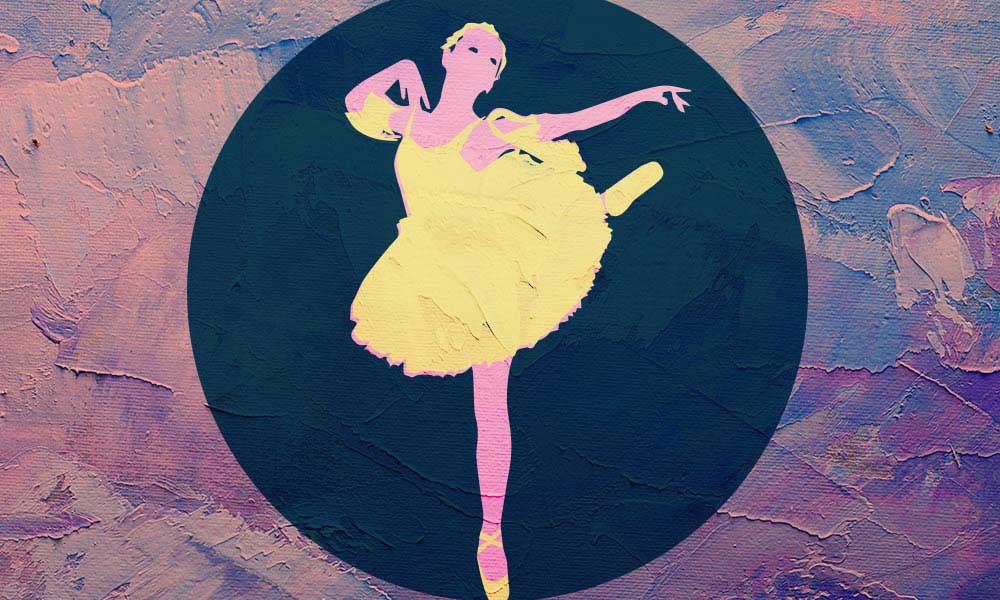Tchaikovsky composed his ballet The Sleeping Beauty, based on a romantic fairy tale, in 1889. He was 49 years old and at the height of his fame and powers. In the chronological order of his compositions, it follows the Fifth Symphony and the Hamlet Overture (both completed in 1888) and precedes by a year his opera The Queen Of Spades. In the order of the three great ballets he composed, The Sleeping Beauty is the middle one, coming more than a decade after Swan Lake and three years before The Nutcracker.
Listen to our recommended recording of Tchaikovsky’s The Sleeping Beauty, performed by the Berlin Philharmonic conducted by Mstislav Rostropovich, on Apple Music and Spotify.
The Sleeping Beauty: A Guide To Tchaikovsky’s Fairy Tale Ballet
Tchaikovsky’s The Sleeping Beauty originated in a proposal made three years earlier by Ivan Vsevolozhsky, Director of the Imperial Theatres in St. Petersburg, for a ballet based on the story of the mythological water nymph Undine. This was abandoned in favor of a version of La Belle Au Bois Dormant, the fairy tale by Charles Perrault from his collection Histoires Et Contes Du Temps Passé (1697). Describing the story as “enchanting beyond all description,” Tchaikovsky accepted the commission with alacrity (despite the lukewarm reception that had greeted Swan Lake) and set to work on a scenario that was a conflation of Perrault’s original tale, a version of it by the Brothers Grimm (in which the King and Queen survive the 100-year sleep and celebrate the marriage of their daughter to the Prince) with, additionally, several characters from other Perrault stories.
Right from the beginning, Tchaikovsky worked closely with the choreographer Marius Petipa, ballet master of the Imperial Ballet, requesting and receiving written instructions from him as to how the dance events should unfold. His first thoughts on the music were penned around October 1888. Still, once the scenario was established, it took him, he said, “about 40 days” to complete a rehearsal score (May 26, 1889), producing the complete score by August 20: some 30 numbers in all and very nearly three hours of music (most productions today make some cuts). Tchaikovsky regarded it as one of his finest compositions.
Rehearsals began on September 20 in St Petersburg with Tchaikovsky bearing “a 10-pound box of chocolates, drawing children like bees to their hive”. The world premiere of Tchaikovsky’s The Sleeping Beauty took place on January 15, 1890, in the Imperial Mariinsky Theatre, St Petersburg, conducted by Riccardo Drigo (whose own ballet score Les Millions d’Arlequin later achieved enormous success). An officially closed dress rehearsal had been held the day before, attended by the Tsar. His reaction to the performance? “Very nice.” That was all!
The ballet is in three acts and a prologue.
Prologue
It is the occasion of Princess Aurora’s christening. In the banqueting hall, King Florestan and his Queen are welcoming her fairy godmothers. Catalabutte, the master of ceremonies, verifies the guest list as the royals and godmothers arrive with their baptismal gifts. As the Lilac Fairy presents her gift, there is a commotion. Carabosse, a fairy of whom no one has heard for fifty years, arrives and upbraids Catalabutte for excluding her from the invitations. She predicts, as a gift to Aurora, that she will prick her finger and fall asleep forever. The Lilac Fairy intervenes. Instead of eternal sleep, Aurora will be awakened by the kiss of a Prince – and the two will live happily ever after. The enraged Carabosse departs.
Act 1
Twenty years later. Visitors are in the royal garden to celebrate the Princess’s birthday. Catalabutte spots some old women among the villagers threading spindles in front of the royal palace, something that has been banned since the day of Carabosse’s curse. He threatens them with death. Just then, the King and Queen arrive with four princes, all seeking Aurora’s hand. The princes intercede on behalf of the old women, and they are spared. Amid general rejoicing, Aurora enters, dances with each prince in turn, accepting from each the rose he offers. She sees an old woman who offers her a spindle. She is delighted with it and dances, waving the spindle in the air. Suddenly, she pricks her finger and falls. The old woman is Carabosse, of course, who vanishes in a cloud of smoke and fire. The Lilac Fairy appears, consoles the despairing parents, and orders everyone to the castle where they must sleep for a hundred years. Trees and bushes quickly grow to completely hide the castle.
Act 2
A century later. Prince Désiré’s hunting party is taking a rest in a forest clearing. His hunting companions and the ladies in the retinue attempt to divert him with dance, archery, and games. The Prince is in a somber mood and, though urged by his tutor Galifron to choose a wife, is not interested and remains aloof from the party. The hunt moves off, leaving the Prince alone. The Lilac Fairy appears and tells him the story of the sleeping princess. She summons a vision of Aurora and her friends that entrances the Prince and he begs the Fairy to be led to her. In Scene 2, he is guided to Florestan’s castle and to Aurora’s bedside. He gazes rapturously at her – yes, it is the Sleeping Beauty he saw in the vision – and, mad with love, kisses her. She has been dreaming of him and takes him in her arms. The spell is broken. The forest vanishes, the King and Queen and all the courtiers awaken.
Act 3
The wedding of Aurora and Désiré. Led by Catalabutte, the nobles and courtiers greet the King and Queen for celebrations. The Silver, Gold, Sapphire, and Diamond Fairies arrive followed by guest characters from other fairy tales, among them Puss-in-Boots and the White Cat, Cinderella and Prince Fortuné, and Red Riding Hood and the Wolf. Princess Aurora and Prince Désiré dance together, followed by Romans, Persians, Indians, Americans, and Turks, who dance a sarabande. Finally, the Lilac Fairy appears to bless the marriage to ensure that, in true fairy-tale tradition, they all live happily ever after.
The legacy of Sleeping Beauty
Drigo went on to conduct The Sleeping Beauty over 300 times. The initial reaction was favorable, though Tchaikovsky did not live quite long enough to see it established as a popular favorite (by 1903, it was the second most popular ballet in the Imperial Ballet’s repertoire). Tchaikovsky’s initial enthusiasm for one of his new works habitually cooled to disappointment. This one was different. “I admit that I love to work within a time limit, I love the excitement, the urgency. And this does not reflect at all on the quality of my works. The Sleeping Beauty may be the best of all my compositions, and yet I wrote it improbably quickly.” The young Alexandre Benois, who would play such a seminal role in Diaghilev’s Ballet Russe in the early part of the twentieth century, thought that the music of The Sleeping Beauty, “really possesses so strong a power of suggestion that those who give themselves up to it are completely transported from reality into the magic world of fairy tale.” It is difficult to disagree.



